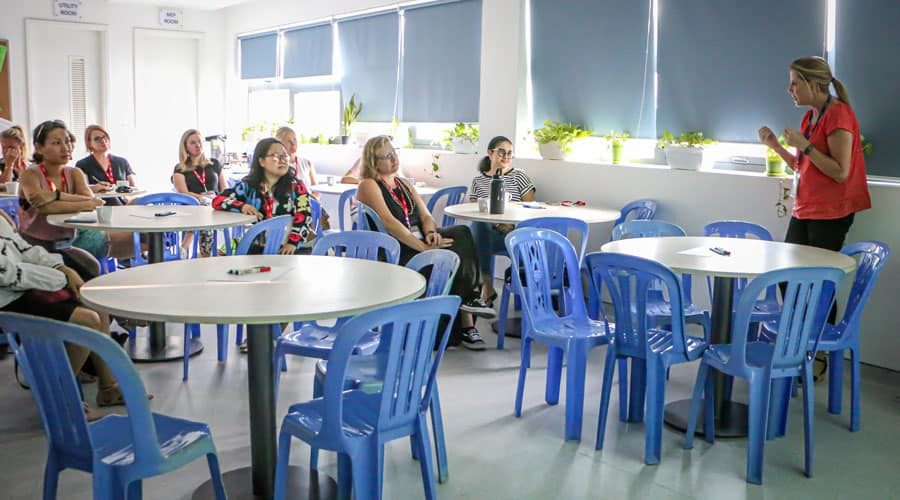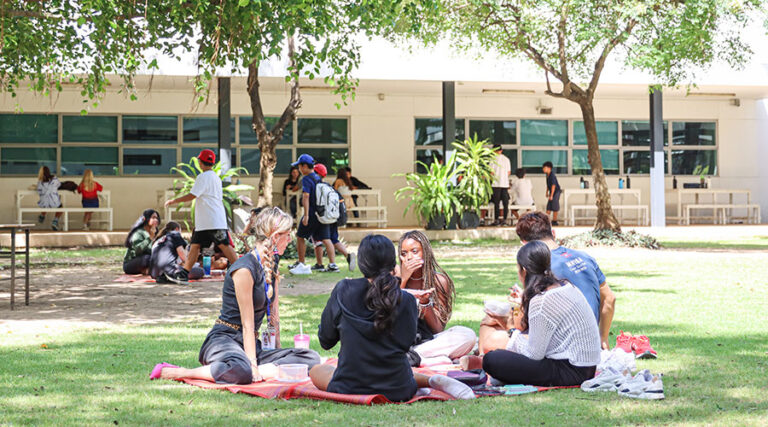Helping children manage thoughts, feelings and actions
Alison Stanton | Elementary Counselor
Self-regulation is the ability for us to manage our thoughts, feelings, and actions. It helps us to remain calm and rather than react when facing stress and big feelings.
Self-regulation helps a child to solve a problem without giving up or calm themselves before a big tantrum. Without self-regulation, children struggle with relationships and have difficulties in the classroom.
When we are born we have little ability to self-regulate. Our parents and primary caregivers help us to learn through a process called co-regulation.
Parents and caregivers use their voice, tone, movements and response to help children become calmer and regulate. Parents and carers need to pay close attention to the cues that children send and respond with care and sensitivity. Children need to feel loved and safe. They need to have consistent role models that they trust. These adults use co-regulation to help them learn to learn self-soothing and calming skills.
We continue to learn self-regulation through interactions with others throughout our lives. Parents, teachers, mentors and friends all play an important role.
Caregivers build strong relationships by communicating through their words and actions that they are interested in the child’s world and respect them as an individual. They also structure the environment to ensure the child feels physically and emotionally safe and able to take risks and learn new skills. They also teach self-regulation through modelling, instruction, practice and positive reinforcement.
To successfully do all of this we as parents and caregivers must first manage their own self-regulation. We must pay attention to our own thoughts and beliefs about the behaviours of others. We need to be self-aware and practice calming ourselves when we are stressed.
When we support a child in distress we need to be consistent and calm. We need to speak in a warm soothing voice. We need to acknowledge that the child is upset and have empathy, but not be drawn into the drama. We need to be patient as we help a child to understand big feelings and manage their response.
How we Co-regulate with our children at different stages
Co-regulation – Young babies
- Physical and emotional comfort when a child is distressed
- Structure and routine
- Respond to cue – child’s needs
- Adjust the environment to reduce stress
Co-regulation – Preschool
- Model waiting strategies
- Redirect child attention to regulate behaviour
- Teach appropriate expectations and rules
- Clear, consistent and calm consequences
- Teach words to express emotions
- Coach ways of solving simple problems
- Model and reinforce calming strategies
- Provide a space for calming down
Co-regulation – Elementary students
- A warm, nurturing, supportive relationship
- Model conflict resolution strategies
- Modelling positive self-talk, growth mindset
- Coaching calming strategies, relaxation
- Teach and support organization and planning skills
- Clear consequences while staying calm
- Provide opportunities to make decisions and lead
Co-regulation – Adolescents
- Continue a warm, responsive relationship
- Model, discuss and coach self-regulation skills
- Provide opportunities to make decisions and self-monitor behaviour in less risky situations.
- Give time and space to calm down when upset
- Clear rules, boundaries and consequences
- Provide gentle support and empathy in times of intense emotion
- Monitor organizational skills and task completion
Additional reading / viewing
- https://www.zerotothree/
- https://www.understood.org/en
- https://raisingchildren.net.au/
- http://www.behaviourmatters.org.uk/




